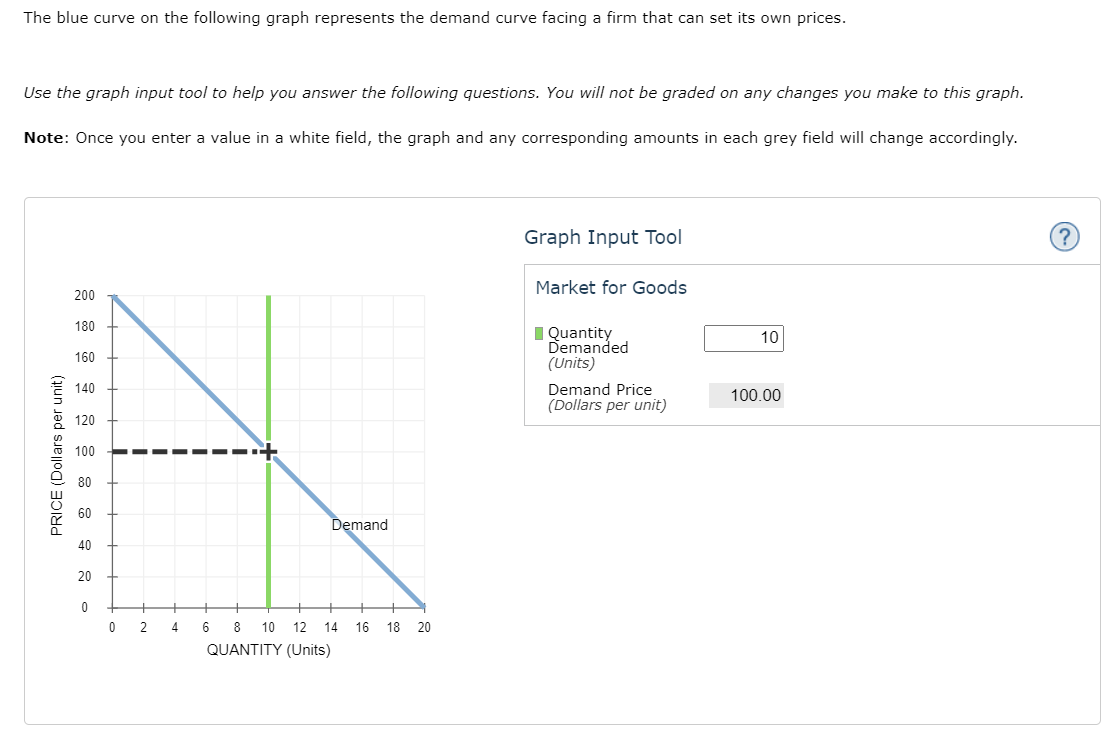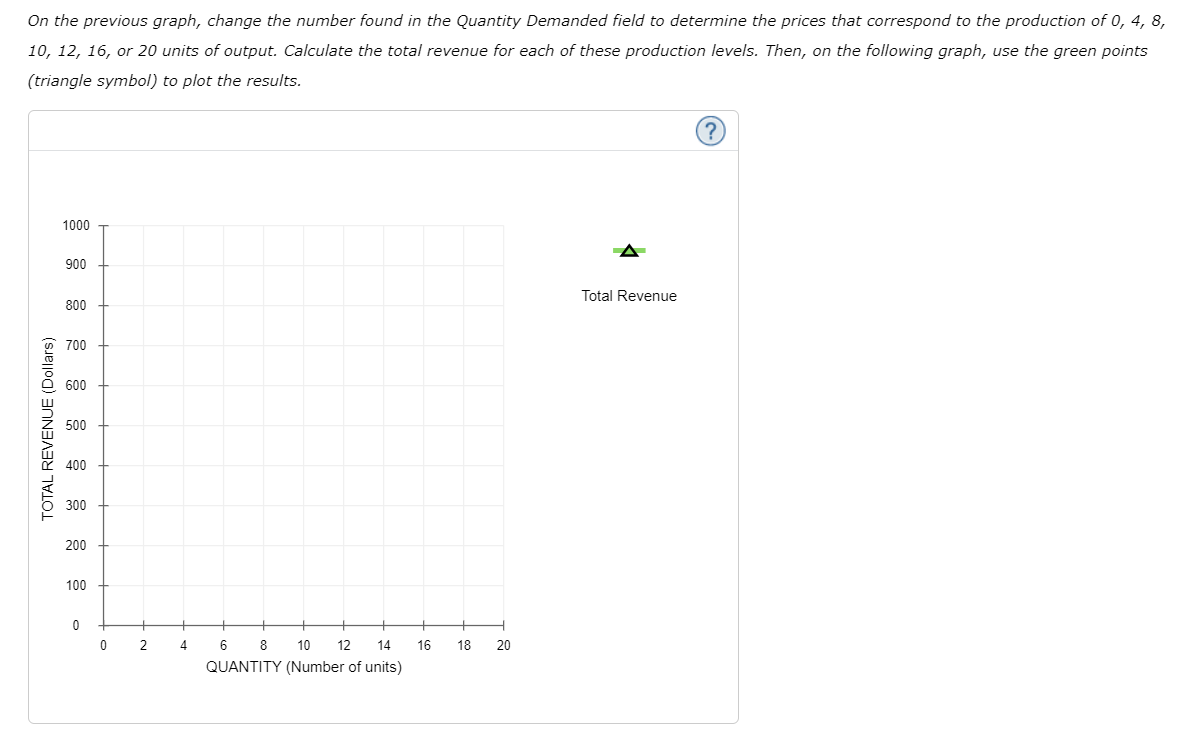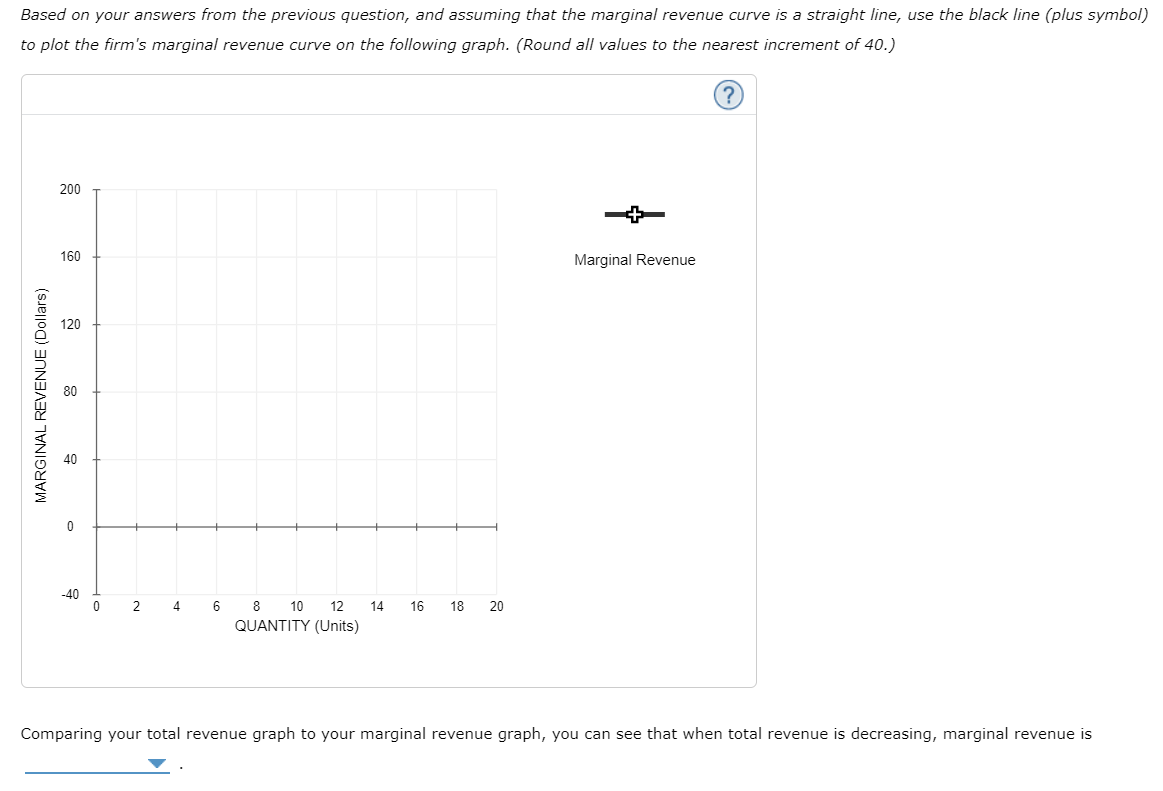Home /
Expert Answers /
Economics /
the-blue-curve-on-the-following-graph-represents-the-demand-curve-facing-a-firm-that-can-set-its-o-pa876
(Solved): The blue curve on the following graph represents the demand curve facing a firm that can set its o ...
The blue curve on the following graph represents the demand curve facing a firm that can set its own prices. Use the graph input tool to help you answer the following questions. You will not be graded on any changes you make to this graph. Note: Once you enter a value in a white field, the graph and any corresponding amounts in each grey field will change accordingly. Graph Input Tool
On the previous graph, change the number found in the Quantity Demanded field to determine the prices that correspond to the production of 4 , 8 , \( 10,12,16 \), or 20 units of output. Calculate the total revenue for each of these production levels. Then, on the following graph, use the (triangle symbol) to plot the results.
Calculate the total revenue if the firm produces 4 versus 3 units. Then, calculate the marginal revenue of the fourth unit produced. The marginal revenue of the fourth unit produced is Calculate the total revenue if the firm produces 8 versus 7 units. Then, calculate the marginal revenue of the eight The marginal revenue of the eighth unit produced is
Based on your answers from the previous question, and assuming that the marginal revenue curve is a straight line, use the black line (plus sol) to plot the firm's marginal revenue curve on the following graph. (Round all values to the nearest increment of 40 )



